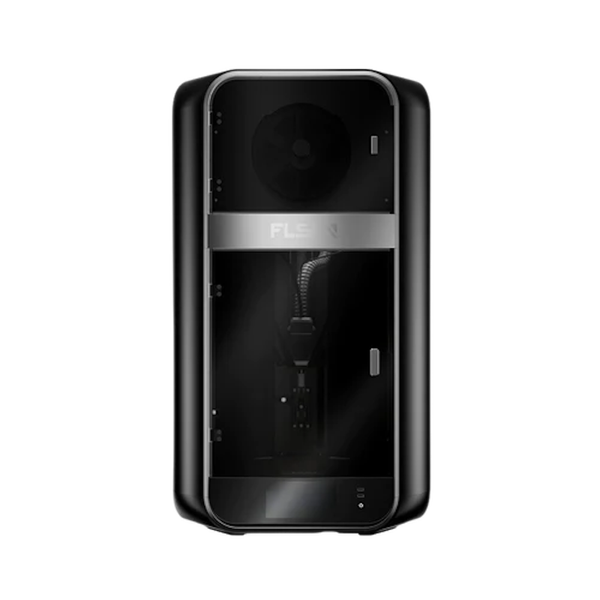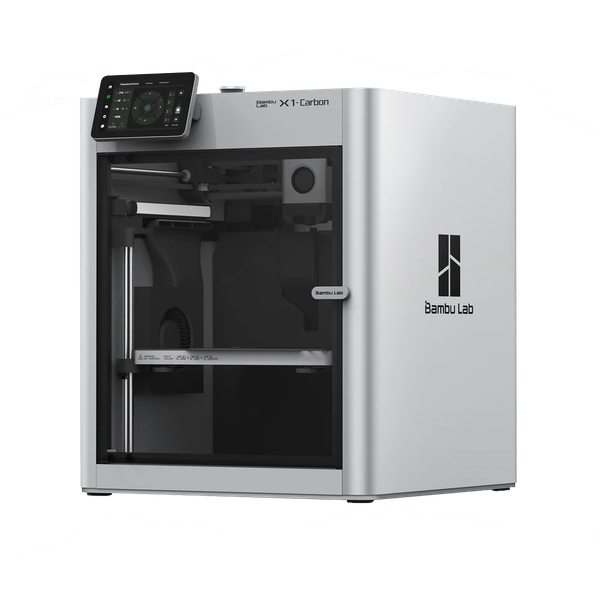If you make a purchase using a shopping link on our site, we may earn a commission. Learn More
Comparing the FLSun S1 and Bambu Lab X1 Carbon

FLSun S1
(~12.75 x 12.75 x 17 in)
Vs.

Bambu Lab X1 Carbon
(~10.25 x 10.25 x 10.25 in)
About the FLSun S1
The FlSun S1 is FLSun’s flagship delta printer, claiming print speeds up to 1,200 mm/s, with a maximum acceleration of 40,000 mm/s². The maximum flow rate for PLA filament is 110 mm³ per second. The Flsun S1 measures 550 x 595 x 1030 millimeters and weighs an impressive 39 kilograms, with a printing chamber that is 320 millimeters in diameter and 430 millimeters high. The print nozzle is an all-metal hot end that can be heated to up to 350 °C and has a diameter of 0.4 millimeters. The print bed can be heated to up to 120 °C; where the use of PLA, PETG, TPU, ABS, and carbon is supported. The print bed can be heated in zones. A LiDAR sensor system should ensure high accuracy of the first layer, while leveling and Z-axis compensation should be automatic. A camera is installed, so the AI should then be able to detect errors, which also enables time-lapse recordings to be made. Operation is said to be particularly easy thanks to a seven-inch touchscreen with a resolution of 1920 x 1080, which also supports a connection to a PC. The exhaust air from the FDM printer is not simply released into the environment; instead, a HEPA and an activated carbon filter are used. The S1 also leverages a closed-loop stepper motor system and there’s also “microtac radar”, which works to improve print quality, accuracy, flow, and prints’ first layers. Perhaps most interesting about the S1 is its dedicated chamber for filament drying, as well as stock temperature and humidity monitoring. That, combined with a “newly designed” FLSun OS system, creates a powerful printing platform for the experienced user looking for fast results.
About the Bambu Lab X1 Carbon
The Bambu Lab X1-Carbon is a premium 3D printer that offers extremely fast print speeds, an enclosed build chamber, and automated calibration and monitoring features enabled by AI vision and Lidar sensors. The X1-Carbon pushes the envelope of both performance and ease of use for consumer FDM 3D printers, making it a compelling choice for users who are willing to pay for a higher-end machine. The X1 Carbon has a slightly above-average print volume of 256 x 256 x 256 mm (10" x 10" x 10") and features a direct drive extruder with an all-metal hot end and a hardened steel nozzle, enabling it to print all available filament types. Its CoreXY motion system and advanced firmware features such as pressure advance and vibration compensation allow it to attain print speeds of up to 500 mm/s while maintaining high print quality. One differentiating feature of the Bambu Lab X1-Carbon is the Lidar sensor, which allows it to precisely measure the height of the first layer of the print. This serves as an additional bed leveling calibration tool, but also enables the X1-Carbon to analyze the flow rate of the filament, allowing it to automatically calibrate its extrusion parameters for different filament types. This is a feature we haven't seen on any other consumer FDM 3D printer. In addition, a camera in the build chamber uses AI image processing to detect failed prints. The X1-Carbon has an integrated 5" touchscreen controller, but can also be controlled wirelessly with the Bambu Studio computer application or the Bambu Handy phone app. The apps allow you to remotely monitor and control the X1-Carbon. Files can be loaded wirelessly from the Bambu Studio app, or by using a microSD card. The downsides to the Bambu Lab X1-Carbon are its high price and lack of third-party repair parts. The MSRP of the X1-Carbon is higher than many other 3D printers with comparable key specifications, making it a premium option for buyers who prioritize ease of use and advanced features over affordability. And because of its automated calibration features and custom design, almost all repair parts are sold only by Bambu Lab. Although there is a wide range of repair parts available on Bambu Lab's site, this does mean that the longevity of the X1-Carbon is dependent on Bambu Lab's continued support of the machine. Our overall take on the Bambu Lab X1-Carbon is that its advanced printing capabilities and ease-of-use features make it an excellent option for users who are willing to pay a premium price for one of the highest-end FDM 3D printers currently available. But for users who are just getting started with 3D printing and want to stick to a lower budget, there are other machines which provide excellent print quality at a much lower price.
Click here to view the FLSun S1.
Click here to view the Bambu Lab X1 Carbon on the Bambu Lab website.
You can find a side-by-side comparison of the specifications for these two printers in the table below:
Details & Specifications
FLSun S1
Bambu Lab X1 Carbon
General
Extruder & Hot-end
Physical Characteristics
Usability
Electronics
Where to Buy
Brands Overview
FLSun
Founded in 2015, FLsun specializes in affordable Delta 3D printers, renowned for their speed, efficiency, and distinctive triangular design. These printers cater to a broad audience, from beginners to advanced users, offering ease of assembly and operation. However, they may present a steeper learning curve and challenges such as operational noise and limited after-sales support, including customer service and availability of replacement parts. Despite these drawbacks, FLsun continues to innovate in the 3D printing industry, making advanced printing technologies accessible while highlighting areas for potential improvement.
Bambu Lab
Bambu Lab, based in Shenzhen, China, and founded by five ex-DJI engineers, has made notable strides in the 3D printing arena with their unique combination of innovation and user-friendly interfaces. They launched their journey with a successful Kickstarter campaign in 2022, securing over $7 million in funding. Their printer lineup, from the flagship Bambu X1-Carbon to the more affordable Bambu P1P, showcases their commitment to high-performance features while ensuring ease of use, making them a rising competitor in the 3D printing industry.